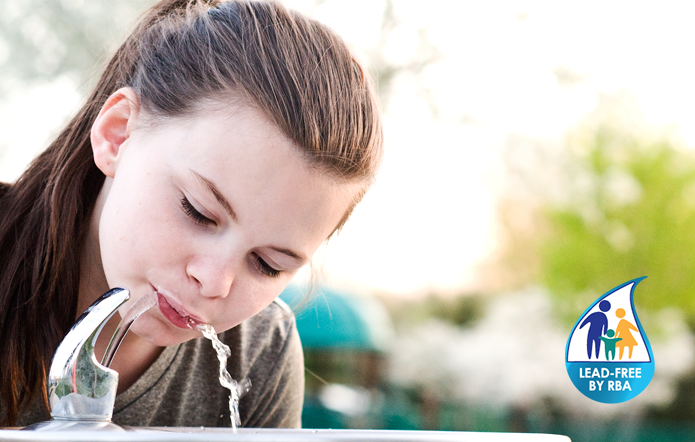Much has been written, reported and discussed both in the media and in numerous industry forums across the country following recent incidents where unacceptable levels of lead have been found in drinking water. These incidents have ignited debate over the consistency of our water sampling testing methods, the types of fittings and fixtures used and the composition of brass alloys from which these items are largely manufactured, assembled, and then used to deliver “safe” drinking water!
Globally, the consensus is clear that there is no safe level for lead exposure!
So where does this leave our children?
In 2013 there were 9,393 schools in Australia. This included primary, secondary, combined (primary and secondary) and special schools across government (71%) and non-government (29%) sectors. This equated to almost 3.65 million individual students enrolled in Australian schools in 2013. Of these, approximately 2.13 million (58.4%) were primary school students and approximately 1.52 million (41.6%) were secondary school students.1
In children, low levels of exposure to lead has been linked to damage to the central and peripheral nervous system, learning disabilities, shorter stature, impaired hearing, and impaired formation and function of blood cells. In the USA, the EPA estimates that drinking water can make up 20 percent or more of a person’s total exposure to lead. Infants who consume mostly mixed formula can receive 40 percent to 60 percent of their exposure to lead from drinking water.2
While these talks will no-doubt continue in Australia regarding the potential revision of regulations governing the acceptable level of lead in plumbing fittings and fixtures, there have been some significant developments in this space!
The publication of the “Lead in Plumbing Products and Materials” report3 is a major start. The Australian Building Codes Board commissioned Macquarie University professor Mark Taylor to investigate the presence of lead levels in drinking water that were influenced by plumbing products and materials – thus resulting in readings beyond those allowed for in the Australian Drinking Water Guidelines (0.01mg/L).
Two key findings from the Macquarie University report stated:
“The Australian and international research literature shows that brass components containing lead that are used in water supply and plumbing systems can leach lead into drinking water.”
“Where water service lines are made of copper, replacement of standard brass-leaded taps with ‘lead-free’ taps results in a relative percentage reduction in the mass of lead delivered in the first litre of dispensed water. However, the use of ‘lead-free’ taps may not totally eliminate the presence of lead in dispensed water.”
Based on these findings, the Macquarie University report recommended:
“Notwithstanding the finding that lead can contaminate drinking water from both mains and premise piping, replacement of the tap with a ‘lead-free’ alternative reduces the potential burden of lead at the point of delivery.”
“Where practical, in and end-of-line fittings should be replaced with lead free options.”
In January 2019, the Victorian School Building Authority published a Practice Note – “Plumbing Fittings and Piping Systems in New School Buildings and Upgrades”. The Practice Note issued to all Principal Design Consultants, Services Engineers and Building Contractors for VSBA and school led projects was developed to deliver “…a new standard of risk reduction with respect to brass plumbing fittings in new school buildings or upgrades.” 4
The Authority identified that whilst current accepted lead levels of up to 4.5% under the National Construction Code for plumbing fittings are allowed, it is significantly greater than the USA’s limit of 0.25%. It must also be noted here that along with the VSBA acknowledging the USA’s lower 0.25% lead limit, some industry groups in Australia have detailed position papers such as that from the Plumbing Products Industry Group (PPI Group) also calling for acceptable lead levels to be brought down from the current 4.5% maximum level to also fall in line with that of the USA’s limit of 0.25%.5
The Authority has therefore implemented some key measures, with the two key being:
“Lead – free or Lead – safe tapware and piping systems (made from stainless steel, plastic, copper or lead – free or lead – safe brass for instance) , are to be installed on all drinking water services in new Victorian schools or in upgrades to existing schools where the required products are available on the Australian market, and”
Plumbing fixtures, materials and fittings installed in new Victorian schools or in upgrades to existing schools must be certified under the Watermark Certification Scheme.”
Do you have to wait for Lead Free Watermark Certified plumbing solutions for your school projects?
The answer simply is NO!
In response to these challenges, The RBA Group in conjunction with our manufacturing and supply partners, are proud to be able to immediately offer our Lead Free and Watermark certified, WELS registered (where applicable) plumbing solutions for your project applications that meet the stated criteria. These include Stainless steel ‘self-closing’ 6 Star rated tapware along with our comprehensive range of refrigerated and non-refrigerated drinking fountains and bubblers inclusive of AS1428.1 accessible design solutions. You can see a small collection of our range here: https://www.rba.com.au/catalogue/category/lead-free-water/.
Tim Fisher, RBA Group Development Manager
References
1 Australian Curriculum Assessment and Reporting Authority, available at www.acara.edu.au
2 United States Environmental Protection Agency, available at www.epa.gov
3 Australian Building Codes Board, available at www.abcb.gov.au
4 VSBA Building Quality Standards Handbook, May 2019, available at www.schoolbuildings.vic.gov.au
5 Plumbing Products Industry Group, available at www.ppigroup.com.au
